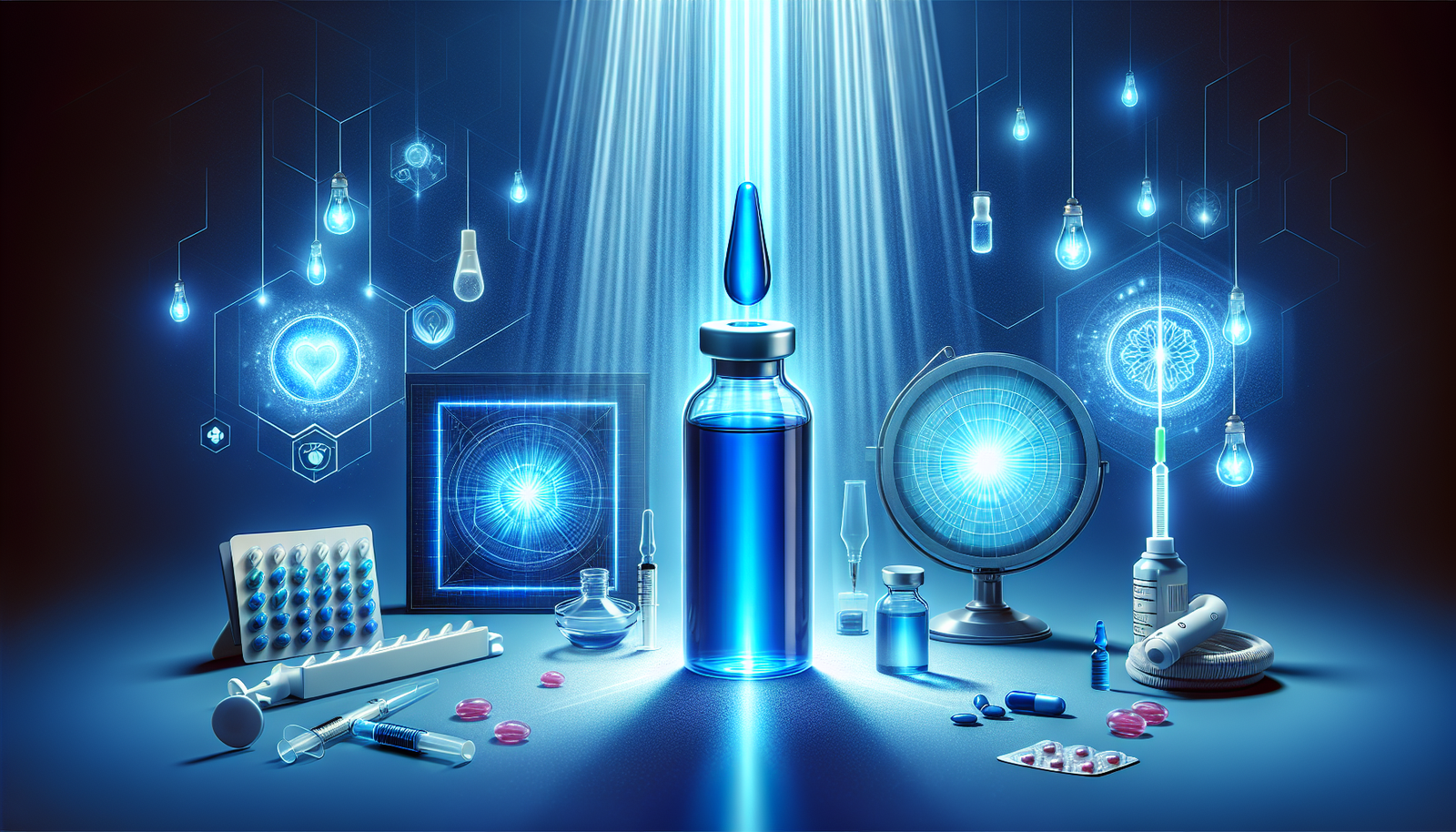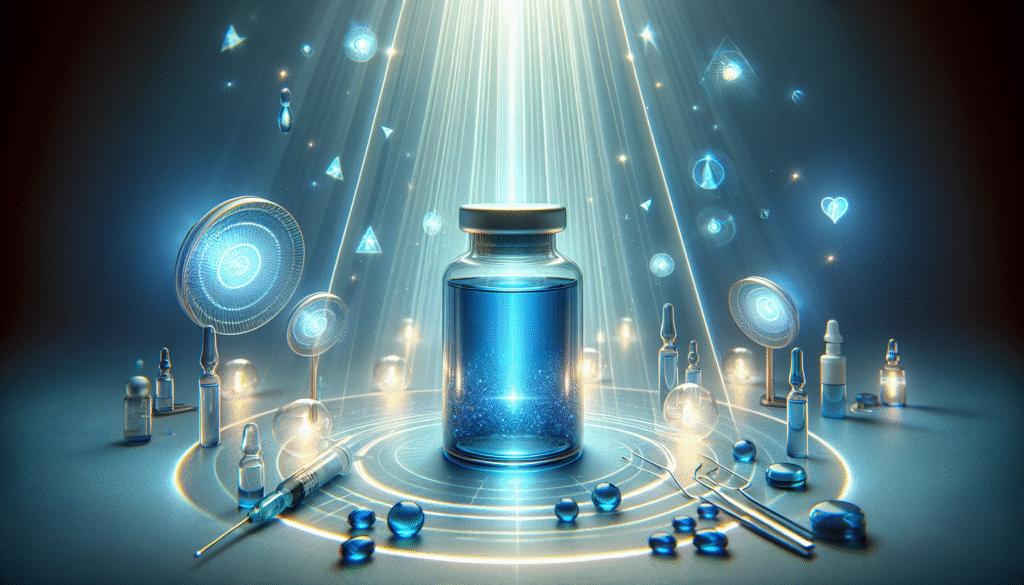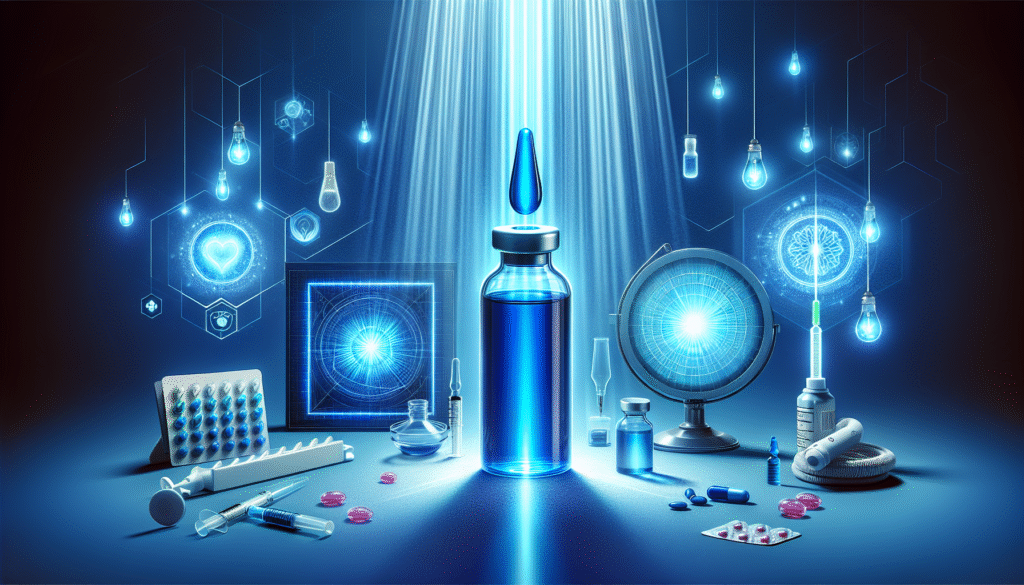
What if a single compound could enhance the efficacy of light therapy in ways you never imagined? The intersection of methylene blue and light therapy presents a fascinating area of research with promising implications for a variety of health conditions. Understanding how these two components interact is essential for anyone interested in the field of therapeutic interventions.

Understanding Methylene Blue
Methylene blue, a synthetic dye, has been utilized in medicine for over a century. Originally used to treat malaria, it has evolved into a compound for various applications, including mental health treatment and as a potential therapeutic agent in mitochondrial function enhancement.
Historical Context
Methylene blue first emerged in the 1870s as a textile dye and subsequently found its way into medical use. Its journey from a simple dye to a complex therapeutic compound is nothing short of remarkable. Over the years, research has evolved, placing methylene blue at the forefront of discussions concerning cognitive function and cellular health.
Mechanism of Action
The effectiveness of methylene blue hinges on its unique biochemical properties. It acts energetically within the mitochondria, the powerhouses of your cells, enhancing the electron transport chain. This enhancement can lead to increased ATP production, ultimately promoting cellular energy metabolism.
The Fundamentals of Light Therapy
Light therapy, or phototherapy, is a treatment that employs specific wavelengths of light to treat various conditions. Commonly used for mood disorders, skin ailments, and even to promote healing, light therapy is gaining traction for its myriad health benefits.
Types of Light Therapy
Several forms of light therapy exist, each with a unique application and methodology:
| Type | Wavelength Range | Common Uses |
|---|---|---|
| Blue Light Therapy | 400-495 nm | Acne treatment, mood enhancement |
| Red Light Therapy | 620-750 nm | Wound healing, anti-aging |
| Near-Infrared Therapy | 750-1,200 nm | Muscle pain relief, joint pain |
Understanding these distinctions is crucial as they set the foundation for combining light therapy with methylene blue.
How Light Affects the Body
Your body responds to light on a cellular level. Exposure to specific wavelengths can stimulate physiological reactions, influencing mental and physical well-being. For example, blue light has been shown to boost mood and energy levels, while red and near-infrared light promote healing and reduce inflammation.
The Synergy of Methylene Blue and Light Therapy
Research is beginning to illuminate the potential synergy between methylene blue and light therapy. When combined, these two modalities might amplify their therapeutic effects, particularly in terms of energy production and cellular function.
Enhanced Energy Production
Methylene blue may enhance the efficacy of light therapy through its influence on mitochondrial function. The photonic energy absorbed during light therapy can be optimized in the presence of methylene blue. This compounded effect could lead to significantly more ATP production than either treatment alone.
Applications in Various Conditions
The combination could have wide-ranging applications. Studies suggest benefits in the following areas:
| Condition | Potential Benefits |
|---|---|
| Depression | Improvement in mood and cognitive function |
| Chronic Pain | Reduced pain perception |
| Neurodegenerative Diseases | Enhanced cellular health |
| Wound Healing | Accelerated healing processes |
The Clinical Evidence
Although research is still developing, several studies shed light on the benefits of combining methylene blue and light therapy. Consistent results suggest a promising avenue for clinical applications, particularly in fields like psychiatry and neurology.
Key Studies
A series of experiments indicate that methylene blue, when used alongside certain wavelengths of light, significantly enhances cognitive function in models of depression. This synergistic effect raises questions about broader applications in mood disorders and their underlying mechanisms.
Another study demonstrated that methylene blue can accelerate the healing of wounds when combined with light therapy treatment, suggesting the duo’s potential in regenerative medicine. The preliminary results are promising, but more rigorous clinical trials are necessary to solidify these findings.

Mechanisms of Interaction
Understanding how methylene blue interacts with light is pivotal in maximizing its therapeutic potential. It’s notable that the compound can absorb light energy and facilitate its transfer to the mitochondria.
Photodynamic Mechanism
One suggested mechanism for this synergy lies in the photodynamic properties of methylene blue. It can generate reactive oxygen species (ROS) when exposed to light, which aids in cellular signaling and stimulates healing processes. The presence of light enhances this effect, creating a powerful combination for various conditions.
Safety and Dosage
While methylene blue is generally considered safe, careful consideration must be given to dosing, particularly in conjunction with light therapy. Standard dosages have varied depending on the context and application, and it is advised to follow established protocols to minimize adverse effects. Monitoring is essential.
Limitations and Considerations
Despite the promising data, significant limitations exist within the current body of research. Many studies remain preliminary, and successful implementation in clinical practice requires substantial validation.
Side Effects and Risks
Methylene blue has potential side effects, including but not limited to, skin discoloration and gastrointestinal distress. Understanding and weighing the risks against the benefits is crucial when considering its use in conjunction with light therapy.
Legal and Regulatory Aspects
As with any emerging therapeutic approach, regulatory considerations must also be factored in. The medical community must navigate guidelines established by regulatory bodies governing the use of methylene blue, especially in combination with other interventions like light therapy.
Future Directions in Research
The integration of methylene blue with light therapy is ripe for further exploration. Continued research will clarify its role, optimize treatment protocols, and potentially expand therapeutic indications.
Potential Clinical Applications
Future research may unveil additional clinical applications. For instance, the combination could yield substantial benefits in managing chronic conditions like fibromyalgia, anxiety disorders, and even forms of cancer where mitochondrial dysfunction plays a pivotal role.
Collaborations and Innovations
Encouraging ongoing collaboration between pharmacologists, clinicians, and researchers will catalyze innovative approaches. As the body of evidence grows, the establishment of best practices for integrating methylene blue into light therapy protocols will enhance patient outcomes.
Conclusion: A New Avenue for Health
The intersection of methylene blue and light therapy presents a unique opportunity for medical advancements. As research continues to expand, you may find that this combination opens new pathways for treating several health conditions. Understanding both the potential and the limitations of this synergistic approach will be critical in your exploration of therapeutic options.
The journey into the relationship between methylene blue and light therapy is just beginning. As more data accumulates, you can expect this field to evolve rapidly. The promise it holds for enhancing your overall health and quality of life cannot be understated. Stay informed, and continue to monitor this exciting area of medicine for future developments.